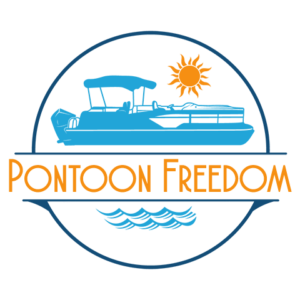When it comes to boating, pontoon boats have gained immense popularity in recent years. These versatile vessels offer comfort, stability, and ample space for recreational activities on the water. However, one question that often arises among pontoon enthusiasts is, “How fast can a pontoon boat go?” In this blog post, we’ll explore the factors that determine the speed of a pontoon boat and provide insights into the thrilling world of pontoon boat speeds.
Factors Influencing Pontoon Boat Speed
- Boat Size and Weight: The size and weight of a pontoon boat play a significant role in its speed capabilities. Generally, larger and heavier pontoon boats tend to have a lower top speed due to increased water resistance. Conversely, smaller and lighter pontoons can achieve higher speeds more easily. Additionally, the number of passengers and cargo on board can impact the boat’s speed, as a heavier load places more strain on the engine.
- Engine Power: The engine is the heart of any boat, and pontoon boats are no exception. The power of the engine directly affects the speed potential. Most pontoon boats are equipped with outboard motors, which come in various horsepower (HP) ratings. A higher horsepower rating generally translates into faster speeds. However, it’s crucial to select an engine that aligns with the manufacturer’s recommended specifications for your specific pontoon boat model.
- Hull Design: The design of the pontoon boat’s hull also affects its speed. Traditional pontoon boats feature two or three aluminum pontoons, which provide stability but may limit speed due to increased drag. However, advancements in pontoon boat design have introduced innovative hull configurations, such as performance pontoons or triple-pontoon designs, which offer enhanced hydrodynamics and can achieve higher speeds.
Pontoon Boat Speed Ranges:
On average, most pontoon boats have a cruising speed range of 15 to 30 miles per hour (24 to 48 kilometers per hour). This speed range is suitable for leisurely cruises, fishing, and enjoying water activities like tubing or water skiing. However, it’s worth noting that individual pontoon boat models may have different speed capabilities, so it’s essential to consult the manufacturer’s specifications for accurate information.
For those seeking a need for speed, there are high-performance pontoon boat models available that can push the boundaries. Equipped with more powerful engines, these boats can reach speeds of 40 miles per hour (64 kilometers per hour) or more. These speed demons offer a thrilling experience, but it’s crucial to operate them responsibly and safely, adhering to local boating regulations and recommendations.
Safety Considerations:
While it’s exhilarating to experience the thrill of speed on the water, safety should always be the top priority. Here are a few safety considerations to keep in mind when operating a pontoon boat:
- Follow Manufacturer’s Guidelines: Adhere to the manufacturer’s guidelines regarding maximum speed limits, engine power, and load capacity for your pontoon boat. These specifications are designed to ensure safe and optimal performance.
- Check Local Boating Regulations: Familiarize yourself with local boating regulations, including speed limits and any restrictions on specific water bodies. Respect these rules to maintain safety for yourself and others.
- Weather and Water Conditions: Be mindful of weather conditions and water conditions. High winds, rough waters, or poor visibility can affect the safety and stability of your pontoon boat. Exercise caution and adjust your speed accordingly.
Conclusion
Pontoon boats offer a delightful blend of comfort, versatility, and recreational opportunities on the water. While their speed capabilities may not rival those of high-performance speedboats, pontoon boats can provide enjoyable cruising experiences
